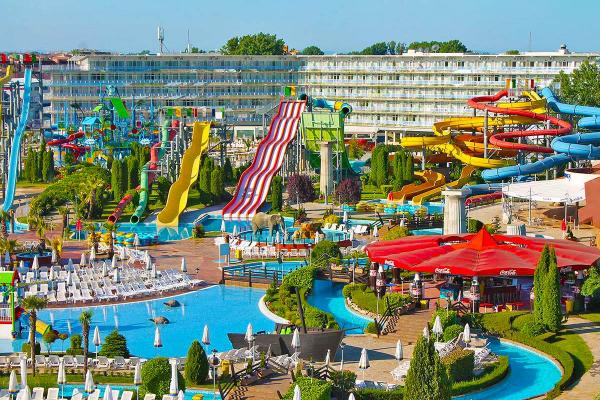Nessebar - A Historic Slice of Heaven

Situated north of Bourgas and south of the Stara Mountain, Nessebar is a Black Sea coastal resort with a rich history dating back some 3000 years. The old part of the city is located on a small piece of terrain linked to the mainland by a narrow neck of land. The new part of the city is situated on the coastline and has grown significantly over recent years creating invisible borders between Nessebar and the surrounding cities and resorts.
Established towards the end of the Bronze Age by the ancient Thracians, Nessebar was originally named Melsambria - the city of Melsas, after its creator. During this time, the city was home to two harbours, and today you can still find remnants of the ancient ships which used to frequent these harbours. Greek settlers inhabited the city around 6BC and soon after changed the pronunciation of the city's name to Mesembria. Gradually the city flourished and became an important trading city and a rival to Apollonia (Sozopol). At around 425-424BC the town joined the Delian League, under the leadership of Athens. Remains from this period include the Acropolis, a temple of Apollo and an Agora. A wall which formed part of the fortifications can still be seen on the north side of the peninsula. Bronze and silver coins were minted in the city since the 5th century BC and gold coins since the 3rd century BC.
Nessebar Bulgaria
The city fell under Roman rule in 71BC, but kept its position as an important trade and cultural centre and evidence of this can be seen today as preserved marble reliefs, statues and inscriptions, as well as the pedestal of the bronze statue of the emperor Klavdii show. When the Roman Empire chose Constantinopol as the new capital city and Christianity as the official religion of the empire, the close proximity of Messembria to the new capital worked in favour of the city’s development and the construction of many churches and basilicas began, some of which were identical to those in the capital city. The city was invaded by the Bulgarians in 812 and the name of the city was changed to Nessebar.
Holidays to Nessebar
During the Ottoman and Bulgarian periods of rule, many more churches and monasteries were built and history investigators consider that over 40 churches existed in Nessebar, of which only 26 of them have been found as of today. Nessebar remained a small quiet town until the end of the 19th century, with many of its residents being fishermen and farmers. Nessebar sprung to life as a tourist destination in 1959, when the nearby resort of Sunny Beach was established. Today, Nessebar has become one of the most visited tourist destinations on Bulgarian Black Sea.
Holidays to Nessebar Bulgaria
The beach coastal line of Nessebar is approximately 4km long. The remnants of fortresses’ walls and many ancient buildings attract thousands of tourists from around the world and many fascinated history investigators and archaeologists. Several museums including the Archaeological and Ethnographical museum and also the church museums of St. Spas and St. Stefan can be found today in Nessebar with rich archaeological and ethnographic collections gathered from different periods of time. Nessebar is a favourite to many Bulgarian people who gather during the summer months along with the foreign tourists, attracted by the romantic combination of the sea, sun and antique remains.
Holidays to Nessebar
A number of quality hotels and apartments offer visitors to Nessebar a wide choice of accommodation opportunities along with many restaurants serving a delicious mix of fresh food and excellent service. One thing for sure is this piece of paradise, where modern holiday demands are met while cultural traditions continue, there is a place for anyone, regardless of the budget available for a summer holiday. The close proximity to Sunny Beach provides much entertainment and all night fun.
Book your summer holiday to Nessebar today by visiting our Holidays to Nessebar page.



